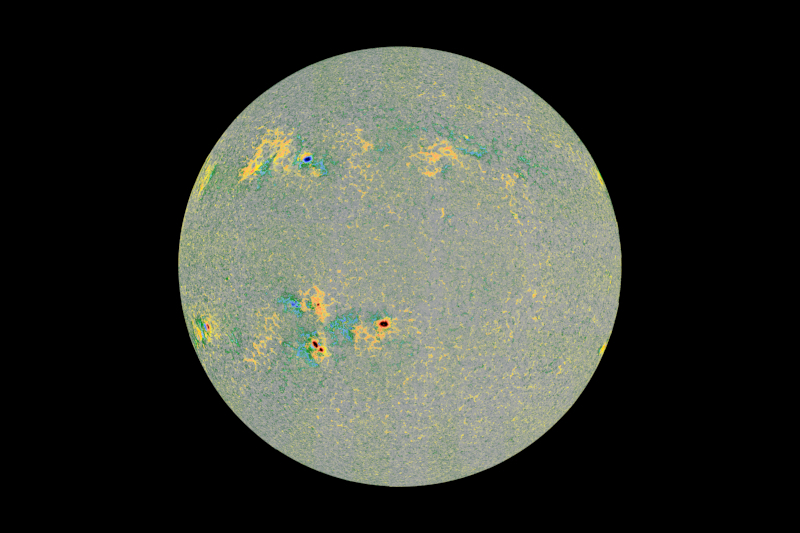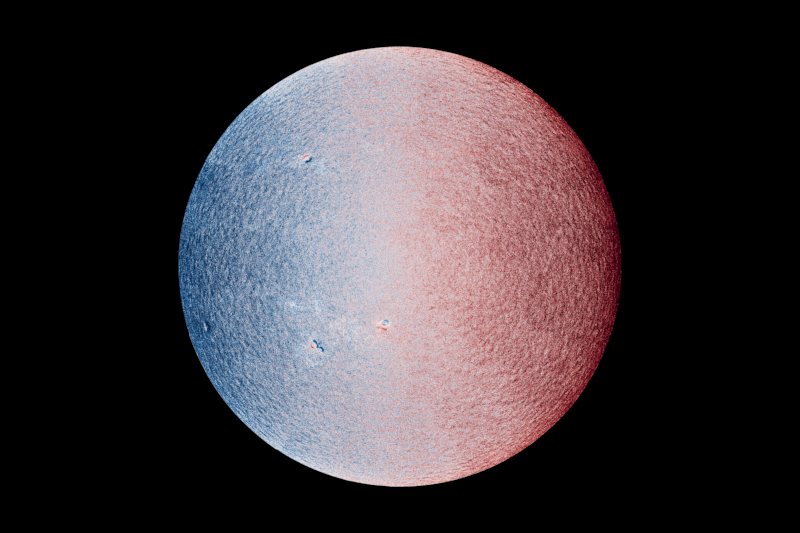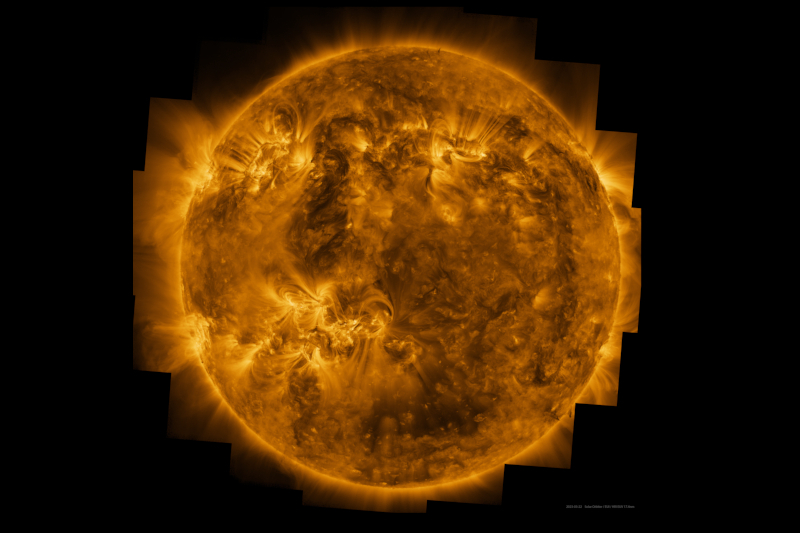The European Space Agency (ESA) has published the clearest photographs to date of the surface of the Sun, obtained using the Solar Orbiter apparatus.

Image source: esa.int
The images, taken last March when Solar Orbiter was about 74 million km from the Sun, captured the star’s grainy surface known as the photosphere. This layer emits visible light. The images were captured by the Polarimetric Helioseismic Imager (PHI), one of six critical instruments on board the space probe.
The granule-like regions on the surface of the Sun are actually large turbulent plasma cells, each about 1000 km in size. These regions are created by convection, a process in which hotter plasma rises from the solar depths and cooler plasma sinks; bubbles form and rise in a saucepan of boiling water in a similar way. Convection cells cover the entire surface of the Sun except for sunspots—darker, cooler areas that appear as spots on the relatively smooth photosphere.

The PHI instrument also helped produce a new map of the Sun’s magnetic fields. It shows that magnetic fields are strongest and concentrated in sunspot regions. This explains why sunspots are cooler than their surroundings: their intense magnetic fields limit normal plasma convection, the movement of matter is controlled by magnetic forces, and some of the heat does not reach the surface.

Another new map, the tachogram, shows the magnitude and direction of the speed at which matter moves on the surface of the Sun. Blue areas indicate mass that is moving towards the Solar Orbiter, and red areas are moving away from it. The image reflects the rotation of the Sun around its axis. Magnetic fields are also visible here, breaking through the surface in sunspot regions.

Last March, the Extreme Ultraviolet Imager (EUI) aboard Solar Orbiter helped image the corona, the outer part of the Sun’s atmosphere. This image clearly shows the magnetic field lines protruding from the surface of the star. Huge volumes of plasma flow along these lines, which often connect adjacent sunspots. The matter is ejected into outer space, forming the solar wind – streams of charged particles that can cause bright auroras on Earth and other planets.
The images in the new series were made up of 25 images each – shooting the entire surface took about four hours. Solar Orbiter was relatively close to the Sun, and the device had to be tilted and rotated to get a complete picture. The full image of the solar disk is 8000 pixels on one side.
The spacecraft is now located 120 million km from the Sun, just beyond the orbit of Venus. Solar Orbiter was launched in 2020 with the goal of collecting images from the solar poles. These images won’t be available until early 2025, when the spacecraft’s orbit will be tilted enough to provide a direct view of the star’s poles.